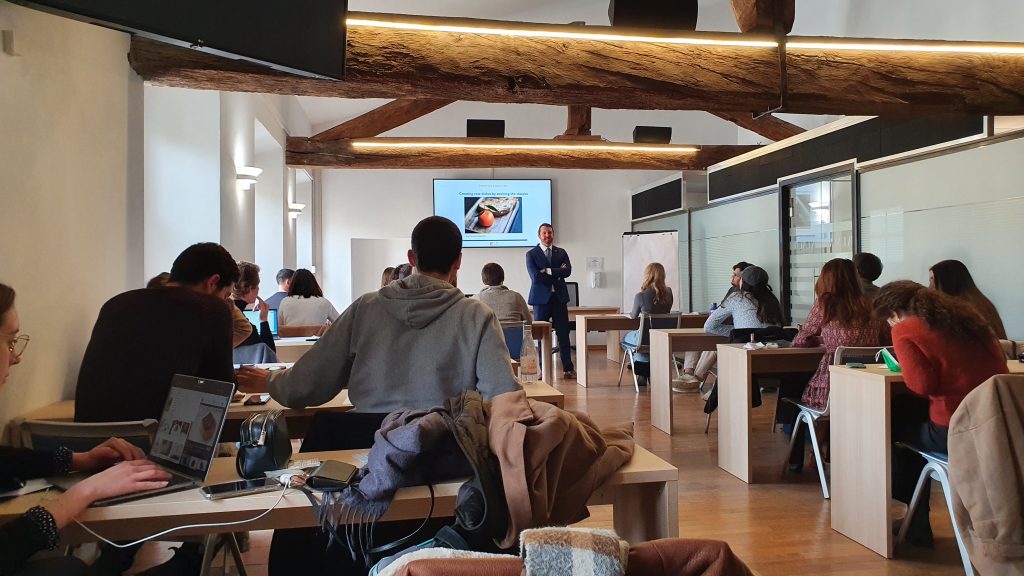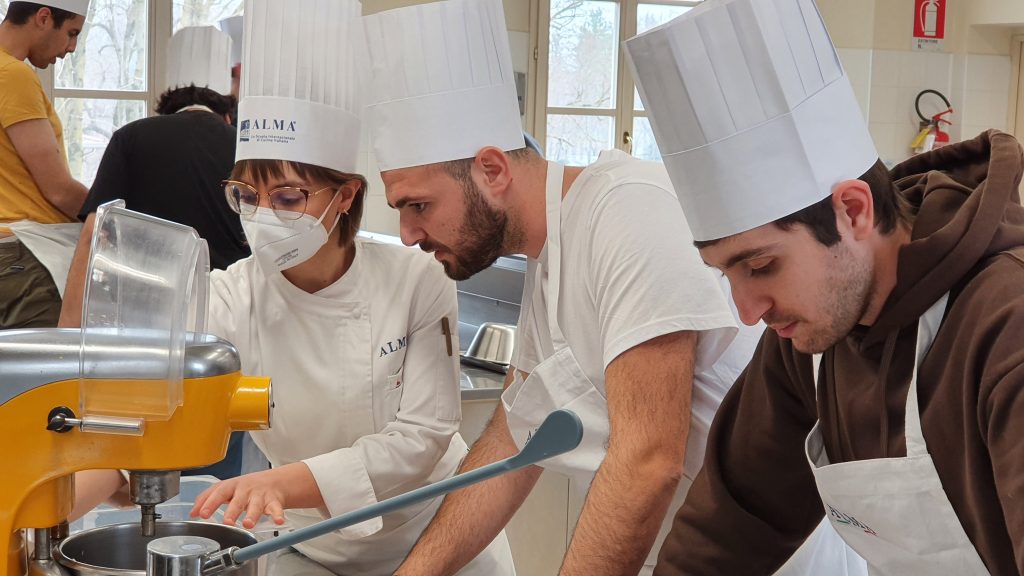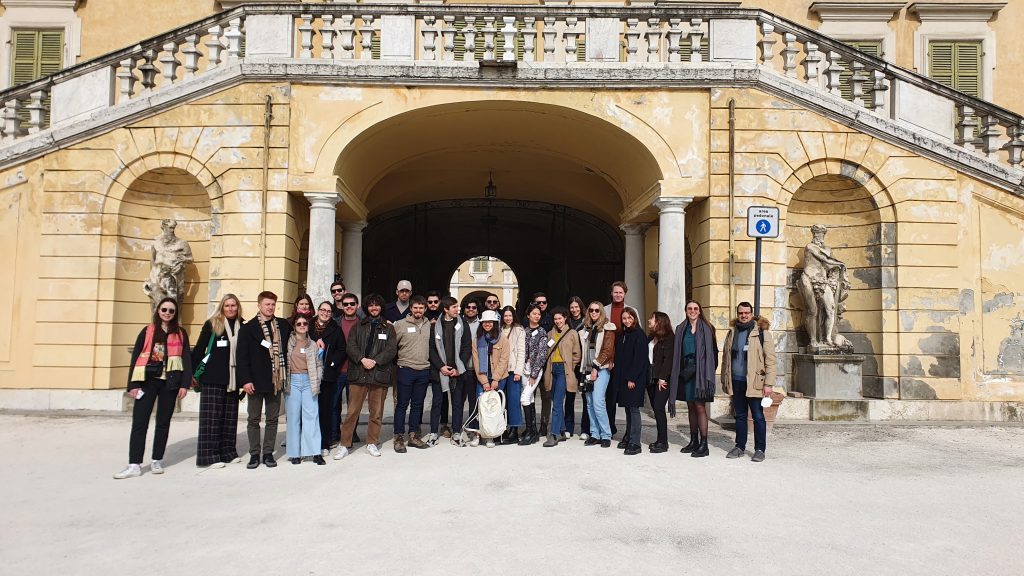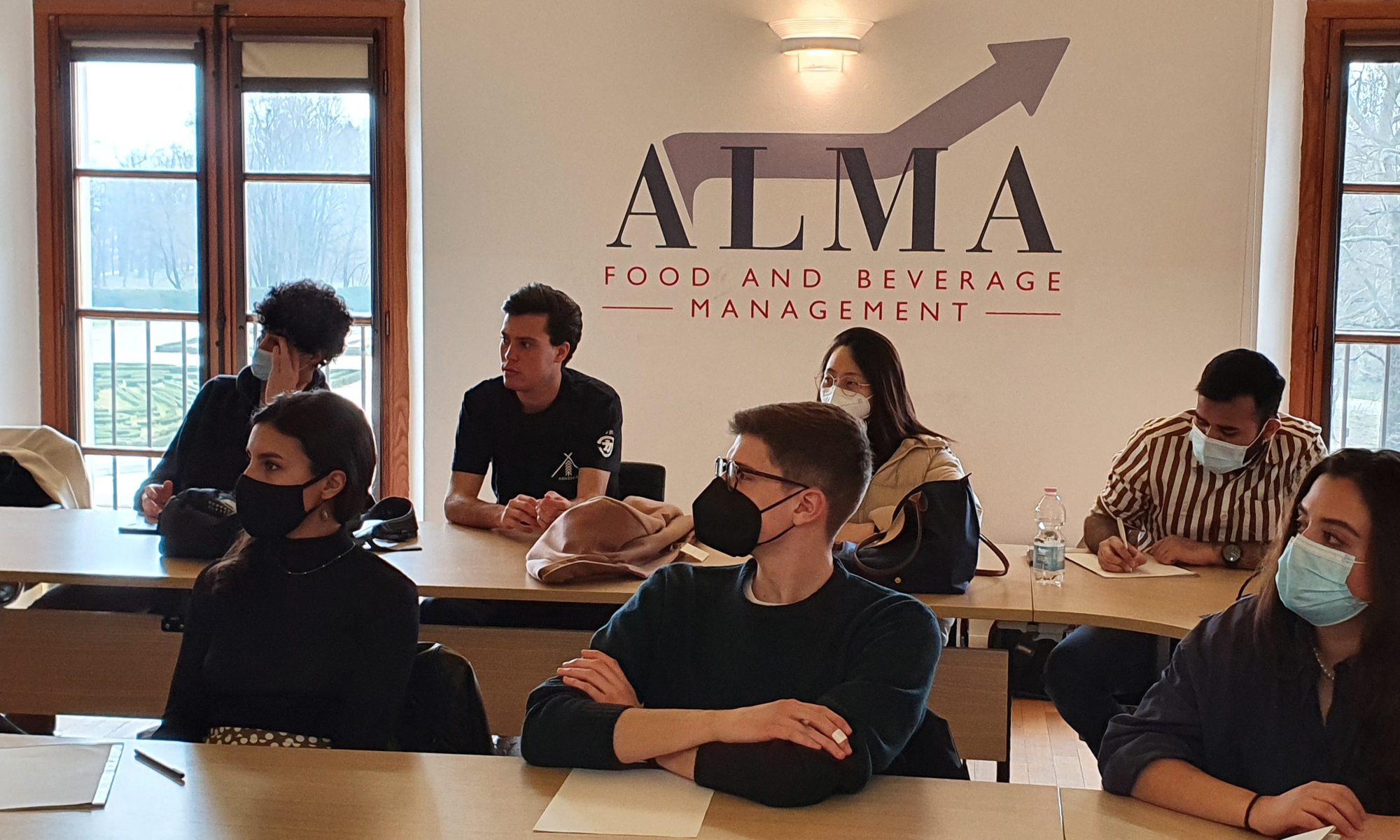Author – Robert Griffin
From menu design to beverage parings, there is more attention to detail in the innocuous elements of restaurants than the average person gives credit for. ALMA, a renowned Italian culinary school, like my alma-mater The Culinary Institute of America (CIA), teaches those details but from two different points of view. As part of ESCP’s MSc in International Food and Beverage Management, we were led behind the pass and took part in ALMA week. During the “Chef for a week”, we experienced five intense days of meetings with Masters, cooking classes, tasting sessions, training experiences and company visits with famous Italian business leaders in the F&B sector. It was a chance to explore the world of food and beverage from the perspective of restaurants and food service. Comparing how and what ALMA and CIA focused on shows the two sides of a restaurant business, why often times they fail, and why there is nothing in a well-run restaurant that is an accident.
First thing first, I must acknowledge that I spent a full 2 years at the CIA and less than one week at ALMA as part of an event built for business students. Both schools absolutely teach both aspects and I know for certain both do an amazing job of exploring each side. Broadly speaking however, the CIA tended to teach more of the technical kitchen skills such as running a station, the science of cooking, how to design a menu to create a functional kitchen, and how front and back of house dance together. ALMA taught more the business side of things. In our short time there, we learned how customers approach menus, how to use psychology to gently nudge them towards more profitable or more popular dishes, and how to think about the coherence and consistency of a dining experience from start to finish.

These two sides, the kitchen and the business or office, are equally important yet they are not always thought of together. When we talk about restaurants, we say the food was amazing or the service was terrible; we talk about the kitchen. When was the last time your friend told you about the amazing cash flows of the bistro down the street? Yet those amazing cashflows are just as vital to the health of the restaurant as the food. Ignoring one at the expense of the other will inevitably lead to another ‘restaurant space for rent’ sign. Moreover, both sets of skills are difficult to master, and someone can spend a lifetime learning them while never reaching the bottom.
Needing both of the different skillsets goes a long way towards explaining why so many restaurants fail. The chef owner might be the best chef in the world, but if she does not understand how the business side of things work, the kitchen will succeed while the business crumbles. The opposite is true too. It takes both the kitchen and the office working in harmony to make a successful restaurant. It’s incredibly hard to be a great chef and a great businessperson at the same time. There is a reason Chef Grant Achatz has Nick Kokonas and Chef Patrick O’Connell had Reinhardt Lynch. What makes this particularly interesting is once the two sides are humming along, nothing in a well-run restaurant is an accident.

Everything from the kitchen and business side work together to harmonize every detail. On the third day of the trip, we met with Chef Carlo-Maria Ricci to learn menu engineering and dive into the details we never notice. The layout of the space and menu, the subtle highlighting of certain dishes, and where our eyes go are not haphazardly thrown together. The items on the menu are there because they make sense from both a business marketing side and from a kitchen production point of view. Moreover, the actual menu you hold or scan works to reinforce a perception of what the restaurant does. If the material is very high-quality paper with round numbers and fancy font, you are likely expecting a nicer dining experience. Similarly, the actual food needs to coherent and consistent with the messages being sent. This balancing of kitchen and office extends to wines as well.
At ALMA we had one day with Sommelier Ciro Fontanesi. He constantly reinforced the idea that the main purpose of a sommelier is to sell wines and nudge the guests towards something that they want and also the restaurant wants to sell. The wine teams needs to constantly balance what the best parings are and what the best wines to sell. Nothing from how the server greets the guests to how the food is plated is a mistake. It all is thought through to reinforce one clear consistent message. Once every detail maximizes the kitchen and the office together at the same time, you’ve got a restaurant.



